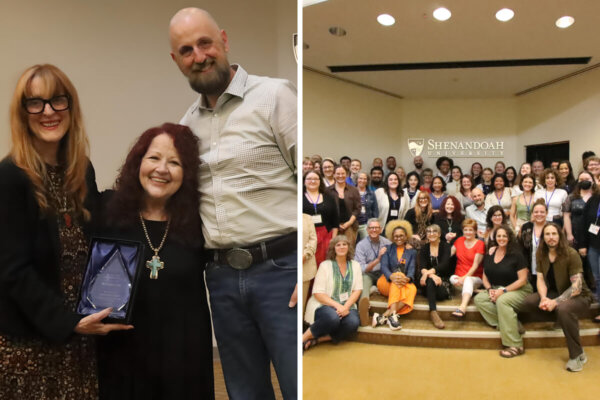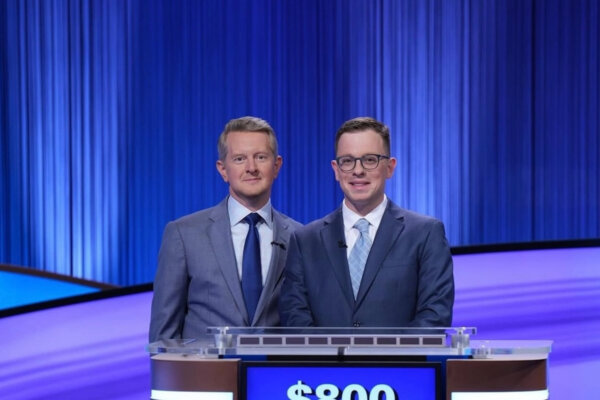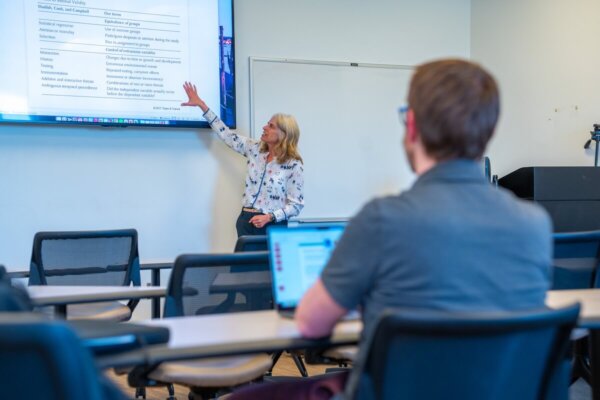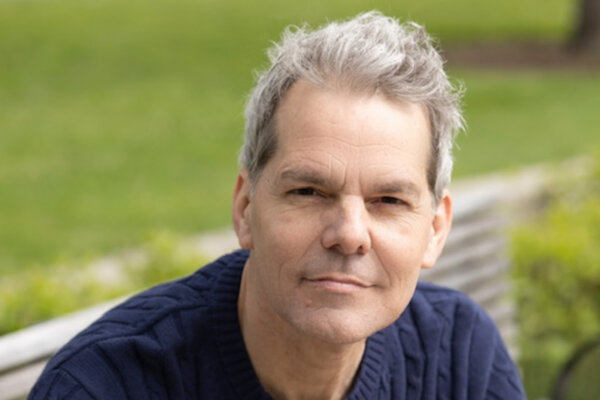Shenandoah Faculty, Students Showcase VR Project at History Conference
‘The Great Experiment’ places participants in Independence Hall during the Constitutional Convention of 1787

Shenandoah University students and faculty members recently traveled to Boston to present to a national group of U.S. historians a virtual reality project that takes participants back to the Constitutional Convention of 1787.
The developing project, called “The Great Experiment,” is a collaborative effort between Shenandoah’s history and virtual reality design programs and the Shenandoah Center for Immersive Learning (SCiL). It places users in a virtual Independence Hall in Philadelphia, filled with animated avatars of the delegates, during the debates that led to the creation of the Electoral College as a means of selecting the president.
 Shenandoah faculty members Warren Hofstra, Ph.D., professor of history, and Mohammad Obeid, Ph.D., assistant professor of virtual and augmented reality, as well as Kevin Hardwick, Ph.D., professor of history at James Madison University, and J.J. Ruscella, chief immersive officer at AccessVR, presented the project at the annual meeting of the Organization of American Historians in Boston from March 31-April 3.
Shenandoah faculty members Warren Hofstra, Ph.D., professor of history, and Mohammad Obeid, Ph.D., assistant professor of virtual and augmented reality, as well as Kevin Hardwick, Ph.D., professor of history at James Madison University, and J.J. Ruscella, chief immersive officer at AccessVR, presented the project at the annual meeting of the Organization of American Historians in Boston from March 31-April 3.
Shenandoah students Cole Herndon ’22, Brynna Strader ’23, Kacey Graff ’24, and Luke Yager ’25 ran a booth throughout the conference that showcased the various programs and projects available at SU.
Dr. Hofstra said the opportunity to present the project at the conference alongside the students who have been instrumental in creating it was a great one. The OAH is the largest professional society dedicated to the teaching and studying of American history and boasts an international membership base of professors, students, historians, archivists, museum curators and a variety of scholars employed in government and the private sector.
Selection for the program of the annual meeting is highly selective and considered by itself to be a recognition of significant work. To our knowledge, no immersive experience on the scale of ‘The Great Experiment’ has ever been presented and demonstrated at the OAH or any other national convention of historians. Everyone involved in ‘The Great Experiment’ project, which now approaches close to 100 Shenandoah University students, faculty and staff, are honored to be breaking new ground in an exciting new area of historical study and sharing our work with eminent historians from across the spectrum of the historical profession.”
Warren Hofstra, Ph.D., Shenandoah University professor of history
Dr. Obeid said the feedback received at the conference regarding “The Great Experiment” – and Shenandoah University – was very positive, and the students were commended for their contributions to a state-of-the-art, scholarship-driven project.
Shenandoah faculty also presented the project at the annual Virginia Forum on April 7-9, while Yager and fellow SU student Ann Fink ’25 ran a booth at the event in Richmond.
Cross-disciplinary projects like “The Great Experiment” include multiple components in the fields of technology and history, as well as theatre and education. Hofstra and Dr. Hardwick worked diligently with students throughout the pandemic to guarantee historical authenticity of the project and guide its intellectual development. Obeid, the project director, led the engineering and technical effort and directed student involvement over the past two years to create the simulation platform.
Development of the project included the writing of a script using notes taken at the Constitutional Convention by James Madison and others present for the discussions in 1787. Monologues given by the virtual delegates were drawn from biographical and documentary materials.
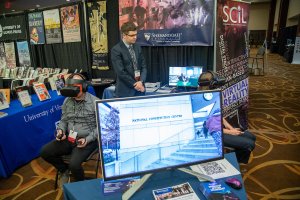 Hofstra noted that the project relies on a variety of amateur and professional actors and voice actors to bring the virtual delegates to life, and that the production values throughout the project have been “extraordinarily high.”
Hofstra noted that the project relies on a variety of amateur and professional actors and voice actors to bring the virtual delegates to life, and that the production values throughout the project have been “extraordinarily high.”
On the technical side, a team of Shenandoah students from various academic programs – including VR design, music production and recording technology (MPRT), and film production – was assembled and supported by SCiL Lab personnel. The project necessitated the construction of a customized motion and performance capture system, the adoption of new state-of-the-art software tools, and collaboration with experts, including Independence Hall’s chief curators and exhibit managers at the National Constitution Center.
What excites me most about this project is its multidisciplinary nature and the fact that it is mostly built by students. ‘The Great Experiment’ is intended to be a teaching and learning platform, but I believe that even making it was a tremendous learning experience. One should also note the scholarly contribution of this work – the project is closely guided by scholarship in the fields of history and virtual reality. I expect multiple publications to be the result of this work, in addition to being showcased at various venues and symposiums.”
Mohammad Obeid, Ph.D., Shenandoah University assistant professor of virtual and augmented reality
While all of the historical elements of the project are in place, completing “The Great Experiment” in the near future involves the integration of technical components – such as three-dimensional optical scanning and 3D modeling, analysis of architectural drawing and portraiture, sensor-tracking technology and game engines – into the finished virtual reality experience.
Hofstra and Hardwick are currently working on a book, provisionally titled “‘Perfectly Novel’: The Intellectual Origins of the Electoral College,” intended to accompany “The Great Experiment.”
